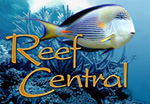Vodka, vinegar, biopellets and other organic carbons.Why dose them? Why not dose them?
There a have been a number of questions on organic carbon dosing and are thousands of posts on the Reef Chemsitry forum. I have many pms on this subject . This thread is intended to help folks who are considering using them. I'll discuss what they do and offer comparisons on various methods for folks to consider. It is a complex subject and much is still unknown but I'll try to avoid being arcane. I'll do it in sections and take questions along the way if you have them.
The goals for organic carbon dosing are: reducing NO3 and PO4 thus allowing tanks to support more bioload and feeding than otherwise; adding bacteria at the bottom of the food web.
Let's start with the bacteria.
The first objective when dosing organic C( carbon) is to proliferate bacteria in the aquarium that will take up inorganic nitrogen(N) and inorganic phosphate(Pi) commonly referred to as NO3/ nitrate and PO4/orthophosphate).
As bacteria multiply, they convert the inorganic N and P ,commonly called nutrients( NO3 and PO4) in the hobby, to organic forms as part of their bodies or as by products.These organics can be consumed in the food chain and/or exported by foam fractionation ( skimming) and/ or adsorbents like granulated activated carbon (GAC). The inorganic N and P can not be exported short of large water changes unless it is converted to an organic form via biological activity by bacteria ,algae,sponges etc. Inorganic N and P do not bind to GAC and are not attractedt o the air water interface which makes them unskimmable.
The bacteria involved in this process are facultative heterotrophic bacteria of various species with dominance related to the type of organic carbon they are breaking down.
Facultative means they flourish in environments with and without oxygen. Taking the free oxygen first as it takes less enrgy for them to do so and then moving on to the oxygen fixed to nitrate( NO3).
Heterotrophic means they need a source of organic carbon(C) since they can't make their own as they are non photosynthetic. Organic carbon is a critical nutrient for all living things along with N and P.. We don' hear about C as much as N and because we can't measure it with hobby grade equipment. There will be more on this in the next section which will be on the nutrients.
The bacteria will use the oxygen in a particular area and when it's gone they start taking it from the NO3; the later process is known as anaerobic respiration. This occurs even in thin bacterial films. Once the bonds between the O3 and N are broken by these bacteria, the resulting N binds to N forming N2( nitrogen gas) which bubbles out of the tank. This adds to the N taken out as food thus depleting additional N from the aquarium. The relative amounts of aerobic( free oxygen consuming ) activity and anaerobic activity will vary from tank to tank spending on a number of variable like surface area,flow etc.
OK, time for a break and some discussion before moving on to the nutrients, alternative carbon sources and a few other things.

